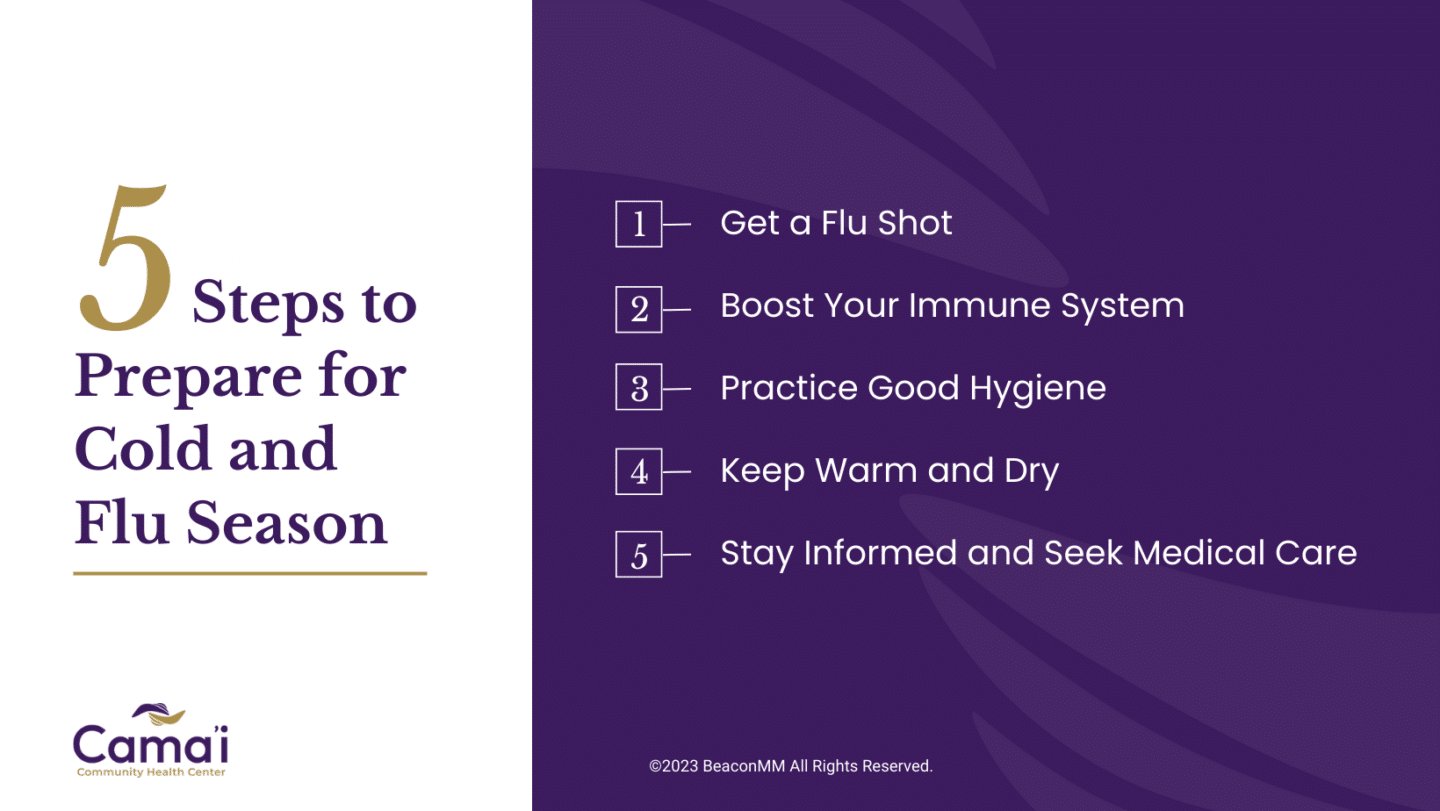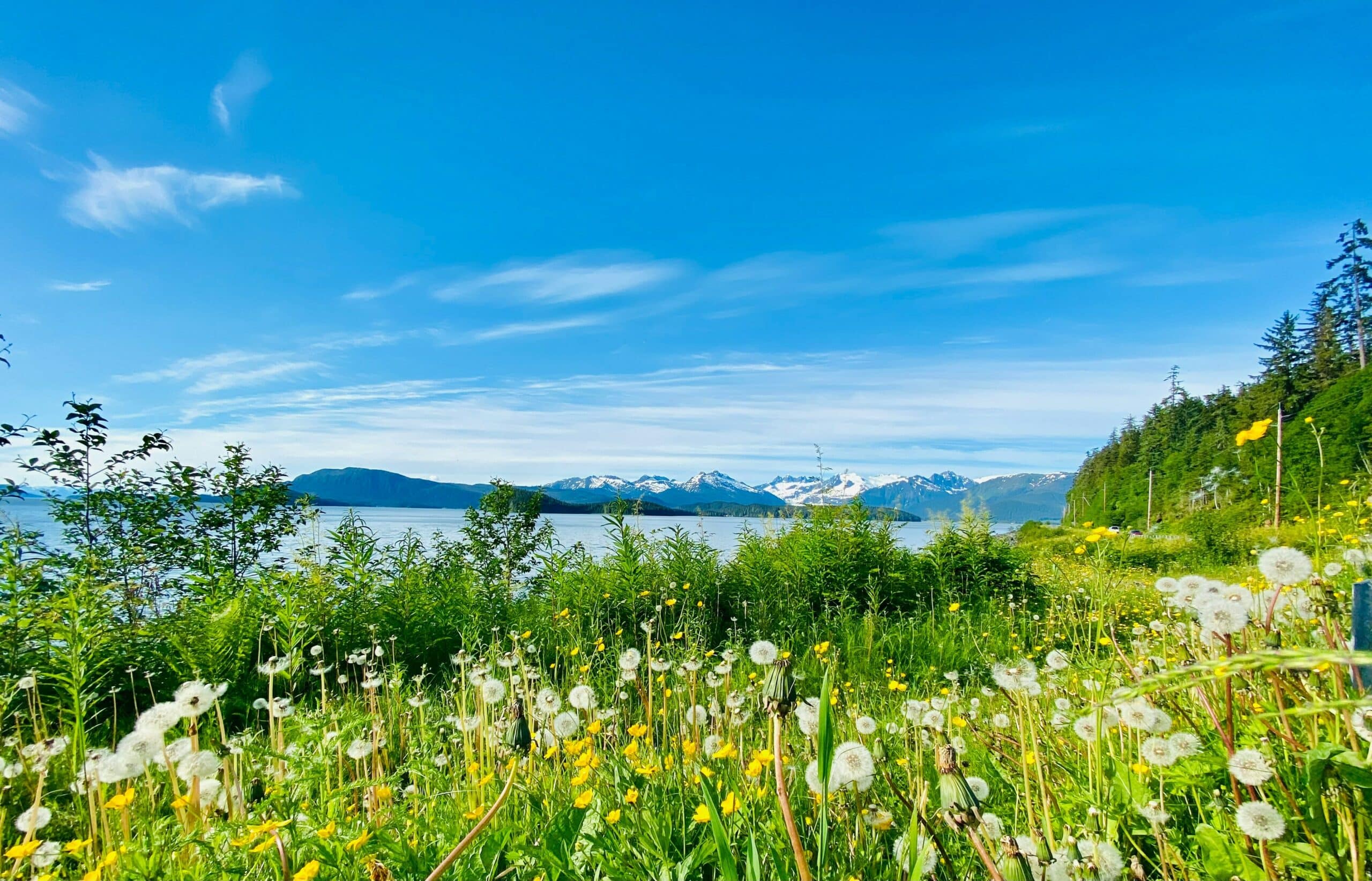As the days grow shorter and the temperatures drop, Alaska’s breathtaking winter landscapes come to life. However, along with the beauty of this season comes the inevitable arrival of cold and flu viruses right around the corner.
While our Alaskan winter is a unique and beautiful experience, it also brings health challenges. And here in Alaska’s harsh winter climate, taking proactive steps to protect your health during the cold and flu season is essential.
In the following, we’ll explore why flu season in Alaska is challenging, along with five key strategies to help you stay healthy and enjoy our winter wonderland to the fullest.
Are you ready to get your flu shot? Reach out to Cama’i Community Health Center today to schedule an appointment.
What are Typical Cold and Flu Symptoms?
It’s important to note that the following symptoms can vary in severity from person to person, and not everyone with a cold or the flu will experience all of these symptoms. Additionally, other respiratory viruses, such as COVID-19, can cause similar symptoms, so it’s essential to consult your primary healthcare professional for an accurate diagnosis if you are feeling unwell.
Common Cold Symptoms
- Runny or stuffy nose: Often with clear or slightly discolored mucus
- Sneezing: Frequent and uncontrollable
- Sore throat: Discomfort, itchiness, or pain in the throat
- Cough: Initially dry and later producing mucus
- Mild headache: Usually not severe
- Fatigue: Feeling tired or low on energy
- Watery eyes: Excessive tearing and possible eye irritation
- Low-grade fever: More common in children than adults
Influenza Virus (Flu) Symptoms
- Fever: Typically high (100°F or greater) and sudden onset
- Chills: Often accompany fever
- Cough: Can be severe and persistent
- Sore throat: Can be present but less common than with a cold
- Muscle aches: Pronounced body and muscle pain
- Fatigue: Can be severe and long-lasting
- Headache: Common and may be intense
- Congestion: Less common than with a cold
- Runny or stuffy nose: Less common than with a cold
- Gastrointestinal symptoms: Some people may experience nausea, vomiting, or diarrhea, though this is more common in children
Facts About Cold and Flu Complications in Alaska
In Alaska, we’re renowned for our stunning landscapes, unique wildlife, and adventurous spirit. However, we’re also known for challenging winter weather and the arrival of the cold and flu season. The problem is that in a cold environment, viruses tend to proliferate much more. And this is where complications can arise.
Let’s explore some key facts about Alaska’s cold and flu season to shed a little light on what makes it distinct — and how you can stay healthy in this rugged environment.
Alaska’s Extended Winter
One striking aspect of Alaska’s cold and flu season is its duration. While many regions experience a few months of cold weather, Alaskans often deal with winter conditions for an extended period. This prolonged winter season increases the potential for cold and flu viruses to circulate, making it even more critical to take precautions.
Alaska’s Remote Communities
Alaska is home to numerous remote communities, some accessible only by small planes or boats. In these isolated areas, access to healthcare resources may be limited. As such, residents need to be proactive in preventing illness by getting recommended vaccinations and practicing good hygiene.
The Impact of Darkness
In the heart of winter, Alaska experiences extremely short daylight hours, with some areas going weeks without seeing the sun. This lack of sunlight can affect mental health, and the body’s vitamin D production plays a role in immune function. As a result, it’s recommended for Alaskans to take vitamin D supplements and engage in activities that combat seasonal affective disorder (SAD).
Prevalence of Respiratory Illness
Cold and flu viruses thrive in cold, dry air. Alaska’s winter climate creates ideal conditions for these viruses to spread. As a result, respiratory illnesses are common during this season. Being aware of this fact can encourage individuals to take extra precautions — such as getting the flu vaccine and practicing good respiratory hygiene.
Preventive Measures Are Key
Given the unique challenges posed by Alaska’s cold and flu season, preventive measures are paramount. This includes getting the annual flu vaccine, maintaining a strong immune system through a healthy diet and regular exercise, practicing good hand hygiene, and staying informed about local health advisories.
Community Support and Resilience
Despite the harsh conditions, Alaskans exhibit remarkable resilience and a strong sense of community. Neighbors often look out for one another, and local healthcare providers work diligently to support the health of their communities. This sense of unity can be a valuable resource during the cold and flu seasons.
5 Steps to Help Prepare for Cold and Seasonal Flu

By taking preventive measures, staying informed, and relying on the support of their communities, Alaskans can navigate the upcoming flu season with strength and resilience. Whether you’re an Alaska resident, a parent worried about your child’s health in school, or you’re planning a visit during the cold months, being aware of these facts can help you stay healthy and enjoy all that this magnificent state has to offer.
1. Get Your Flu Shot
The first and most crucial step in preparing for the cold and flu season is to get your flu shot. The flu vaccine is your best defense against the flu virus, which can be particularly dangerous in Alaska’s remote regions. Check with your healthcare provider or local health department about different flu vaccines and for vaccine availability and recommendations.
2. Boost Your Immune System
A robust immune system is your body’s natural defense against cold and flu viruses. To bolster your immune system, maintain a balanced diet rich in fruits, vegetables, and whole grains. Adequate sleep, regular exercise, and stress management are also vital components of a strong immune system. Consider taking vitamin supplements, especially vitamin D, which can be in short supply during Alaska’s dark winter months.
3. Practice Good Hygiene
Preventing the spread of cold and flu viruses is essential in close-knit Alaskan communities. Wash your hands frequently with soap and water for at least 20 seconds, especially after being in public places or around sick individuals. Carry hand sanitizer for times when soap and water aren’t readily available. Cover your mouth and nose with a tissue or your elbow when you cough or sneeze, and dispose of tissues properly.
4. Stay Warm and Dry
Exposure to extreme cold can weaken your immune system, making you more susceptible to illnesses. Dress in layers, wear a warm hat and gloves, and invest in quality winter gear to stay warm during outdoor activities. Proper insulation and waterproof clothing are essential for Alaska’s chilly winters. Additionally, staying dry helps prevent hypothermia and frostbite, which can compromise your health.
5. Stay Informed and Seek Medical Care When Needed
Keep yourself informed about local outbreaks and health advisories. If you or a family member develops symptoms of the flu, such as high fever, body aches, sore throat, or persistent cough, seek medical care in Alaska promptly. Early intervention can reduce the severity of the illness. Follow your healthcare provider’s recommendations for rest, hydration, and any prescribed medications.
Prepare for Cold and Flu Season at Cama’i Community Health Center
If you’ve begun experiencing cold or flu symptoms, or if you’re concerned about flu outbreaks in your community, it’s important to reach out for treatment or contact us to schedule flu vaccines. Keep in mind that flu activity increases in the winter months, and you’ll want to be prepared.
At Cama’i, we have primary care personnel who are committed to fostering greater public health for residents in our remote community suffering from moderate to severe symptoms of cold and flu. And we understand how isolation can prevent you from getting the care you need — whether the treatment requires antiviral drugs or prescription medications. Remember, you don’t have to suffer alone from cold or flu viruses with access to our services.
For patients living in rural Alaska, when you come to Cama’i for your healthcare needs, you’ll receive the best care and treatment we can offer. Together, we can help keep you healthy.
Are you or your loved ones in need of a flu vaccine to prepare for peak flu activity? Contact Cama’i Community Health Center today and schedule an appointment.


